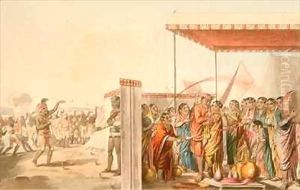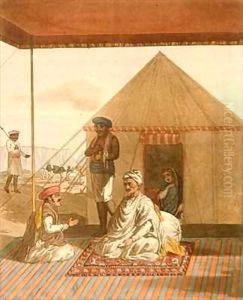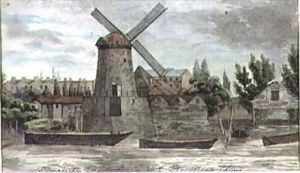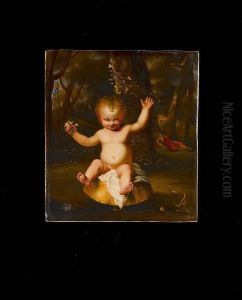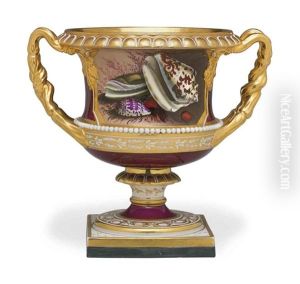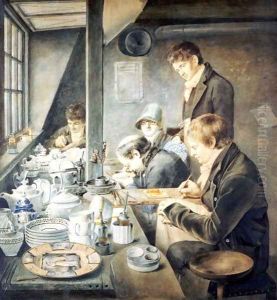Thomas Baxter Paintings
Thomas Baxter was a distinguished English porcelain painter and miniaturist, born in 1782 in Worcester, England. His career is often celebrated for its contributions to the fine arts, particularly in the realm of porcelain decoration, during the late 18th and early 19th centuries. Baxter's adeptness in painting was apparent from an early age, leading him to pursue a career that would eventually see him work with some of the most prestigious porcelain manufacturers of his time, including the renowned Flight and Barr factory in Worcester, among others.
Baxter's work was characterized by its exquisite detail, vibrant colors, and often intricate designs that featured floral motifs, landscapes, and occasionally, scenes from literature and classical mythology. His ability to imbue porcelain pieces with a sense of elegance and refinement was unmatched, making his work highly sought after. Despite the challenges of working in the competitive and evolving world of porcelain manufacturing, which was undergoing significant technological and artistic changes during his lifetime, Baxter's reputation as a master painter only grew.
Throughout his career, Baxter was involved in various innovative projects that pushed the boundaries of porcelain art. He was known for his collaborative spirit, working closely with other artists and craftsmen to create pieces that were not only beautiful but also showcased the best of what could be achieved with the materials and techniques available at the time.
Unfortunately, Thomas Baxter's life was relatively short, as he passed away in 1821 at the age of 39. Despite his early death, Baxter left behind a lasting legacy. His contributions to the art of porcelain painting helped to elevate the craft to new heights and influenced subsequent generations of artists. Today, his works are cherished by collectors and museums around the world, serving as a testament to his skill, creativity, and vision.
